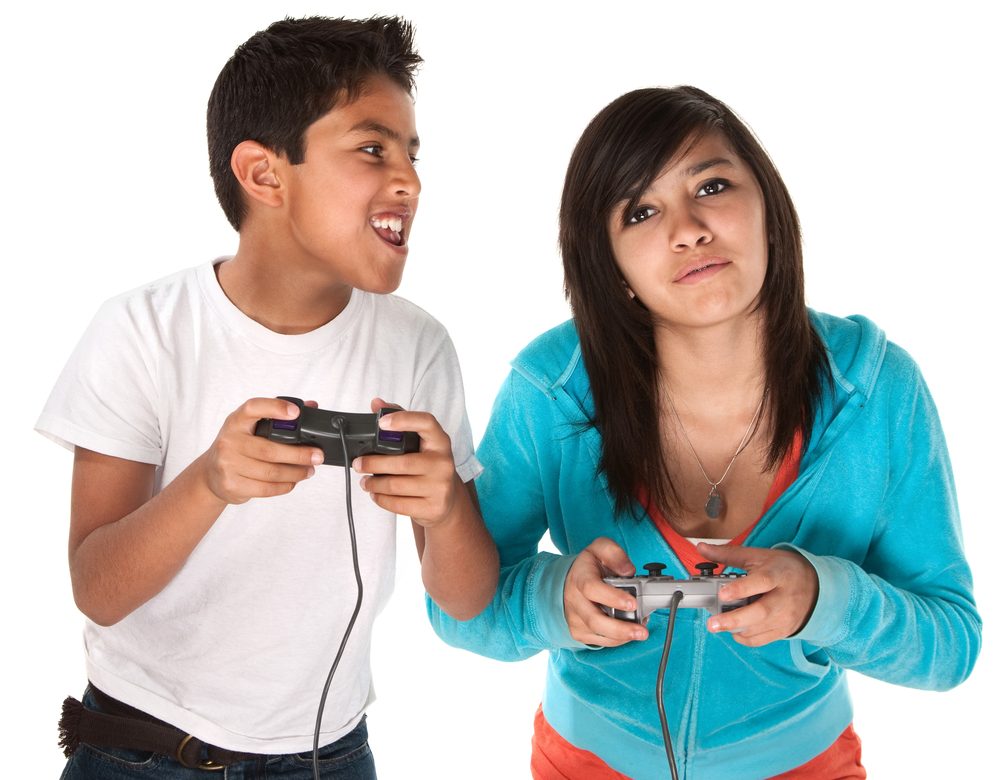One of the biggest battles for today’s parent is balancing our children’s technology use. As a parent and a therapist, I deal with this in my home and at the office. Although internet/technology addiction has not yet found its way into the Diagnostic and Statistical Manual, professionals in the mental health field are witnessing the negative effects of compulsive technology use, regularly. This causes significant distress within the family system and for the child. Dr. Wes and I recently appeared on the KLWN morning show to discuss how this issue. You can listen to that show by clicking the audio clip at the bottom of this post.
While many came of age in an era of expanding technology, today’s parents of young children did not experience the same overwhelming accessibility to technology that their children see every day. This leaves them a narrow reference point as to what appropriate limits might be. Other factors that get in the way of limit setting are parent convenience (the electric babysitter) and the emotional dysregulation that comes as a result of cutting kids off from screen time.
I understand convenience. As a single mother I remember being very thankful for the chance to take an undisturbed shower while my child watched a kid’s show on my tablet. In the short-term it seems easier to let our children look at a screen while at a restaurant, on long road trips, while shopping, cleaning the house, etc. And who wants to deal with the tantrums or “I’m bored” declarations that would ensue if we limited their use during these times? However, not allowing children to tolerate being bored or uncomfortable is doing them a strong disservice that will negatively impact them for years to come.
Many parents seem unwilling to set limits on their child’s technology use, or they give in, thus reinforcing the behavior and teaching the child that the louder they get the more likely they are to get their way. This is especially true when children have mental health diagnoses such as anxiety, ADHD, mood dysregulation disorders, or Autism, as parents believe they cannot tolerate or do not need the same limits on technology as other children. In fact, the opposite is true. These kids need firmer and more consistent boundaries to help them learn to internally regulate.
If as a parent, you’ve found yourself pretty far down this rabbit hole, don’t worry, there are things you can do to dig your way out. However, you must be willing to walk through a little hell to get there. As you adapt, consider this bit of parenting advice: “when in doubt stick with the firmer limit.” Hearing this, gave me permission set limits, even in the face of a distraught child when it gets really uncomfortable.
The American Academy of Pediatrics (AAP) recommends that parents and caregivers develop a family media plan that takes into account the health, education and wellbeing of each child and the family as a whole. They suggest:
- For children younger than 18 months, avoid use of screen media other than video-chatting. Parents of children 18 to 24 months of age who want to introduce digital media should choose high-quality programming, and watch it with their children to help them understand what they’re seeing.
- For children ages 2 to 5 years, limit screen use to 1 hour per day of high-quality programs. Parents should co-view media with children to help them understand what they are seeing and apply it to the world around them.
- For children ages 6 and older, place consistent limits on the time spent using media, and the types of media, and make sure media does not take the place of adequate sleep, physical activity and other behaviors essential to health.
- Designate media-free times together, such as dinner or driving, as well as media-free locations at home, such as bedrooms.
- Have ongoing communication about online citizenship and safety, including treating others with respect online and offline.
Personal and professional experience has taught me that some children may need even firmer limits than the AAP list recommends. For example, some respond better to thirty minutes of electronics after educational, social and household responsibilities are completed. Others do better earning technology time by completing such tasks (i.e. 10 minutes for cleaning room, 10 minutes for homework, etc). Finding out what works for your child and family is key. As your child struggles to transition off technology, you may find that firmer limits are needed, which can later be relaxed somewhat as a less compulsive technology routine develops.
Ensuring kids are not using technology an hour prior to bedtime is imperative to a good night’s sleep. Screen time depletes Melatonin in the brain which is the hormone responsible for sleep. Screen lighting also triggers the brain to experience a daylight response and resist sleep, when what one wants late in the evening is a darkened room leading up to bed time. Even reading on a Kindle or other tablet can trigger this reaction. Also, an especially exciting video game, movie, or TV show watched before bedtime will excite the brain both visually and cognitively, making a good night’s sleep harder to achieve.
There’s even recent evidence that excessive screen time may be changing children’s brains, though we don’t yet know what real life impact that change may have. The National Institutes of Health is conducting one of the first long term studies ever on this topic. You can read a short article about that research here.
If you are struggling with setting these boundaries with your children, I’d love to meet with you and work on strategies to both help you and your family. Navigating our hyper-connected world while simultaneously promoting mental and physical health can be challenging. I’d love to help you on your journey. Click below if you’d like to hear what we had to say on the air.
